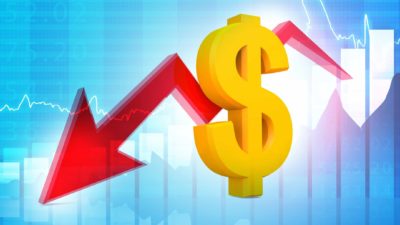The Australian Bureau of Statistics (ABS) released its 'Household Financial Resources' data on Wednesday, illustrating the importance of the Australian Government's JobSeeker and JobKeeper programs to Australian household income from September 2019 to September 2020.
The data shows that Australian household income and wealth were stable throughout the worst of the pandemic. The ABS' reporting period finished after the peak of Victoria's COVID-19 crisis, where the state was plunged into one of the world's harshest and longest lockdowns.
The ABS reported that, despite the Australian economy shrinking by 2.5% during the COVID recession, Australia's average private household income remained stable at $2,117 per week compared to September 2019.
Income from government payments was a significant contributor to this stability. JobSeeker and JobKeeper spearheaded an average increase in government payments of 30% – or $89 per week – to $300 per week.
The survey also provided insights into how those accessing the controversial early superannuation withdrawal scheme used their funds. The data showed that the majority of people accessing the scheme used their withdrawals for mortgage or rent payments (29%) or household bills (27%). Another 15% of people used the funds to pay down credit card or personal debt, while around one in eight people (13%) added to their savings.
The ABS tracks Australia's household income and subsequent spending capability on a quarterly basis, in order to inform government spending and drill deeper into the various impacts slow wage growth or rising inequality has on the broader Australian economy.
Government spending key to broader household stability
As mentioned, the ABS data showed that government spending helped maintain Australian household incomes at similar levels to those seen before the pandemic. It stated that, despite increased government pensions and allowances, total average household income remained stable in the September 2020 quarter.
This illustrates that household income would have fallen were it not for the increases in government payments. By how much, however, is speculative given that job losses generally affected lower-income households to a greater extent than their higher-income counterparts during the recession.
Meanwhile, families appeared to benefit most from the increases in government spending.
Average government pensions and allowances increased for most family types between September 2019 and September 2020. These increased by 82% for couple families with dependent children, the largest proportional increase by household composition.
The data also showed that JobKeeper was particularly important for middle-class families with mortgages. Of those households including an individual collecting JobKeeper, half owned their dwelling with a mortgage. Nearly half (47%) of all households with a member collecting JobKeeper were couple families with dependent children.
Household wealth more resilient than the ASX
While the ABS data didn't track share market value, a look at the ASX's major indexes over the same period shows that, despite household income remaining resilient, Australian listed businesses fared far worse. The S&P/ASX 200 Index (ASX: XJO) fell by nearly 1,000 points over September 2019 to September 2020. Meanwhile, the All Ordinaries Index (ASX: XAO) tumbled by around 800 points.
It wasn't until January this year that the Australian markets returned to roughly similar levels as those seen in February 2020, before the onset of the pandemic. However, of particular interest, the S&P/ASX All Technology Index (ASX: XTX) largely rose steadily throughout the entire period of the pandemic, aside from an initial fall in March, coinciding with the bottom of the bear market.
After a 600 point decline between February and March 2020, the index then rose until February this year, more than doubling in value.
Foolish takeaway
Many of Australia's wealthy global counterparts like the United States and the United Kingdom are still largely trying to contain the health and economic impacts of COVID-19. But it would seem Australia is not only in an enviable position from an epidemiological perspective but also, arguably, from an economic one (although some would dispute this given the level of national debt resulting from increased government payments).
The ABS data shows that, at a median level, the coronavirus pandemic has had a relatively minor effect on most Australians' long-term wealth. Australia's average household wealth remained steady ($1.03 million) in the September 2020 quarter, while median household wealth ($605,000) also remained stable.









